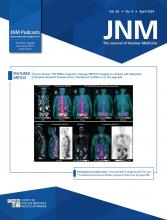Abstract
211At is a promising therapeutic radionuclide because of the nearly optimal biological effectiveness of emitted α-particles. Unbound 211At accumulates in the thyroid gland and in other vital normal tissues. However, few studies have been performed that assess the 211At-induced normal-tissue damage in vivo. Knowledge about the extent and quality of resulting responses in various organs offers a new venue for reducing risks and side effects and increasing the overall well-being of the patient during and after therapy. Methods: Female BALB/c nude mice were injected intravenously with 0.064–42 kBq of 211At or mock-treated, and the kidneys, liver, lungs, and spleen were excised 24 h after injection. A transcriptional gene expression analysis was performed in triplicate using RNA microarray technology. Biological processes associated with regulated transcripts were grouped into 8 main categories with 31 subcategories according to gene ontology terms for comparison of regulatory profiles. Results: A substantial decrease in the total number of regulated transcripts was observed between 0.64 and 1.8 kBq of 211At for all investigated tissues. Few genes were differentially regulated in each tissue at all absorbed doses. In all tissues, most of these genes showed a nonmonotonous dependence on absorbed dose. However, the direction of regulation generally remained uniform for a given gene. Few known radiation-associated genes were regulated on the transcriptional level, and their expression profile generally appeared to be dose-independent and tissue-specific. The regulatory profiles of categorized biological processes were tissue-specific and reflected the shift in regulatory intensity between 0.64 and 1.8 kBq of 211At. The profiles revealed strongly regulated and nonregulated subcategories. Conclusion: The strong regulatory change observed between 0.64 and 1.8 kBq is hypothesized to result not only from low-dose effects in each tissue but also from physiologic responses to ionizing radiation-induced damage to, for example, the 211At-accumulating thyroid gland. The presented results demonstrate the complexity of responses to radionuclides in vivo and highlight the need for further research to also consider physiology in ionizing radiation-induced responses.
Footnotes
Published online ▪▪▪▪.
- © 2013 by the Society of Nuclear Medicine and Molecular Imaging, Inc.







